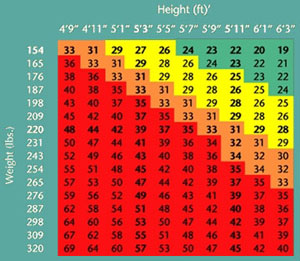
Obesity can be caused by myriad of factors, which includes but is not limited to: hereditary, metabolism, eating habits, activity level, psychological factors and stress. It is a chronic disease that involves having an excessive amount of body fat.
How is it measured?
The “Body Mass Index” is a standard measurement for determining if a person is overweight or obese. Using height and weight, we can calculate BMI and estimate the amount of body fat. While there is a direct correlation between the two, it may not be completely accurate due to the different body types that exist.
Adults
– Underweight – BMI below 18.5
– Healthy Weight – 18.5 to 24.9
– Overweight – 25.0 to 29.9
– Obese – 30 or higher

As one of the leading preventable causes of death in the United States, the number of obesity cases continues to rise at a rapid rate. Over the past 20 years, the United States has been on the losing end of fighting what has become a national epidemic. It has had a tremendous impact on the health of our society, both directly and indirectly. Because of all the related health problems that are associated with obesity, the United States is also seeing a rise in health problems such as:
|
In addition to these major health risks, obesity also makes its presence known by impeding or complicating our approach to daily activities, our ability to travel and enjoy certain activities, as well as our ability to enjoy a healthy social life.
Taking the initiative to change some of your behavioral habits will almost invariably improve your well being and chances of losing weight. Diet and exercise are the main non-surgical methods in combating the chronic disease, but sometimes there are contributing factors that are beyond our control. In those cases, surgical methods have proven to be effective options in the fight against obesity.

